Biochar & Fertilizers
Using biochar together with phosphate (or NPK) fertilizers can improve soil and crop outcomes in multiple ways. It enhances soil structure, nutrient retention and microbial activity, which in turn raises fertilizer-use efficiency. Field trials report yield increases ranging from single digits in crops like to tens of percent in peanut and when biochar is co-applied. Phosphorus in particular becomes more plant-available, helping crops absorb more of the applied. As one review noted, “biochar was as effective as fertilizers in increasing crop yields when added in combination” Practical adoption requires attention to soil type (e.g. liming effect on acidic soils), water management, and economics. In most trials, biochar alone (without fertilizer) did not boost yields in the short, but it showed clear synergistic effects when mixed with fertilizers. Overall, integrating biochar into fertilization strategies offers a promising way to make agriculture more efficient and sustainable, although local trials are recommended to fine-tune application rates and techniques.


The science behind biochar's phosphorus advantage
When biochar and phosphate fertilizers combine in agricultural soils, multiple mechanisms operate simultaneously at molecular, chemical, and biological scales. Biochar's porous structure provides the foundation—with surface areas ranging from 3 to 436 m²/g depending on pyrolysis temperature — creating millions of microsites that temporarily store phosphorus and release it gradually as plants create demand. This slow-release function prevents the typical fate of phosphate fertilizers: rapid conversion into plant-unavailable forms through binding with iron and aluminum oxides in acidic soils or precipitation with calcium in alkaline conditions.
Calcium-phosphorus precipitation
Cation exchange capacity increases of 20-40% represent another critical mechanism. Biochar surfaces develop negative charges through oxidation of aromatic carbon, creating carboxyl and phenolic functional groups that dissociate at soil pH. This enhanced CEC captures ammonium, potassium, calcium, and magnesium that would otherwise leach away— but the benefit for phosphorus is indirect and powerful. When these cations adsorb to biochar rather than soil colloids, they remain available for plant uptake but can't precipitate with phosphorus. Calcium-phosphorus precipitation, which removes large amounts of applied phosphorus from availability in many soils, decreases because biochar sequesters excess calcium while keeping it exchangeable.
Biochar pores create protective habitat for beneficial microorganisms, increasing microbial biomass carbon by 50% at 5% biochar application rates. Alkaline phosphatase enzyme activity increases 52-112%, directly enhancing the conversion of organic phosphorus into plant-available inorganic forms. Phosphorus-solubilizing bacteria like Pseudomonas and Burkholderia species thrive in biochar-amended soils, their populations supported by improved aeration, moisture retention, and the slightly alkaline microenvironment many biochars create. These microbes secrete organic acids and enzymes that release phosphorus from recalcitrant pools, functionally increasing the phosphorus available beyond what was applied as fertilizer.
The biological dimension amplifies..




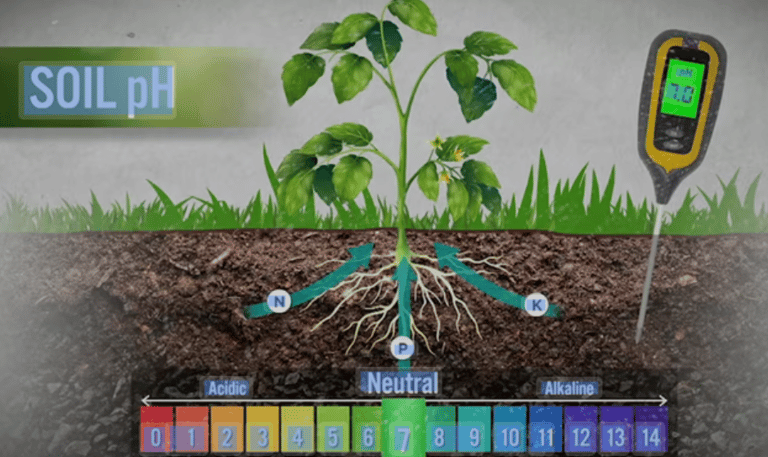

Soil pH balances..
Soil pH between 6.0-7.0 maximizes nutrient availability across the periodic table, which is why agronomists monitor it intensively. Below pH 6.0, phosphorus increasingly binds to aluminum and iron, while calcium, magnesium, and boron become deficient. Above pH 7.5, phosphorus precipitates with calcium, and iron, manganese, zinc, copper, and boron availability plummet. These pH-nutrient relationships explain why biochar's liming effect matters tremendously—it's not just raising pH, but specifically moving acidic soils into the optimal 6.0-7.0 range where phosphate fertilizers work as intended rather than rapidly converting to unavailable forms.
Rainfall and irrigation create the primary pathway for phosphorus loss in most soils—not through leaching, since phosphorus binds strongly to soil particles, but through erosion and runoff that physically transport soil particles with their attached phosphorus. A single intense rainfall can remove more phosphorus from fields than plants absorb all season, representing both economic loss for farmers and environmental damage when that phosphorus reaches waterways. Biochar reduces erosion by improving soil structure and aggregate stability, the physical binding of soil particles into larger, more stable clumps that resist detachment and transport.
Some key factors for biochar addition
Phosphorus erosion..


Plant-available water capacity increases 2-3% per 1% biochar added to soil, translating to 15-20% improvements at typical application rates.
Hydraulic conductivity—the rate water moves through soil—typically increases 17-33% with biochar amendment.
Small pores hold water against gravity while large pores allow excess water to drain, preventing waterlogging. The optimal soil maintains both characteristics, and biochar pushes soil structure toward this ideal.
With the addition of biochar to the soil, Cation exchange capacity increases of 20-40% translate directly to reduced leaching losses, with documented reductions of 29-31% for nitrogen and 22-25% for phosphorus compared to unamended soils.
For phosphorus specifically, available soil phosphorus increases to 90 mg/kg with optimized biochar amendments in acidic soils, compared to typical values of 10-30 mg/kg.
Meta-analyses spanning thousands of observations show 10-16% average yield increases when biochar supplements fertilizer programs, with long-term effects (beyond 2 years) reaching 16% as biochar ages and weathers in soil.
Individual crop responses vary substantially: tubers show 24.5% average increases (highest), legumes 21.2%, maize 14.3%, and wheat 8%.
Root vigor increases up to 178%, total root area expands 91%, and root tip numbers double in some studies.
Net photosynthesis rates increase up to 491% in studies using phosphorus-loaded biochar, indicating that plants not only grow larger root systems but also operate more efficiently when biochar alleviates phosphorus limitation.
During Pyrolysis temperatures between 250-600°C, specific surface area increases from 3 to 436 m²/g, ash content rises as volatile organic compounds are driven off, and pH increases from 6.6 to 10.4. These changes generally enhance agronomic value up to about 600°C.
For phosphate fertilizer users, optimal pyrolysis temperature sits at 450-600°C. This range balances phosphorus availability, adequate stability for multi-year effects, reasonable carbon sequestration for potential carbon credit revenue, and sufficient surface area for nutrient retention.
A northeastern Washington farm used on-farm gasification to convert grass seed screenings and straw into biochar, applying 18 Mg/ha (8 tons/acre) to winter wheat fields. Results showed 288% yield improvement over two years compared to acidic soil controls, outperforming traditional hydrated lime amendments.
Pacific Biochar's three-year Pinot Noir vineyard trial in California's Salinas Valley demonstrates long-term commercial viability. Testing biochar alone, compost alone, and biochar-compost combinations on sandy soils with low organic matter, they documented combined three-year yields of 21.5 tons/acre for biochar-compost treatment versus 15.8 tons/acre for controls, representing 36% improvement.
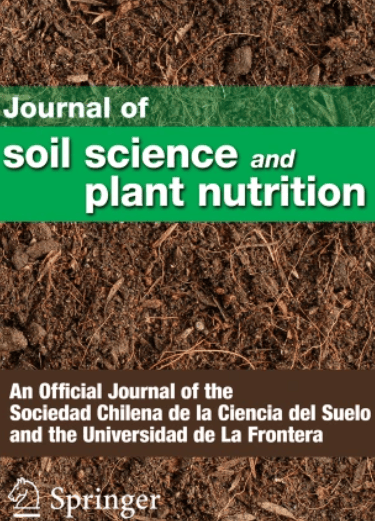

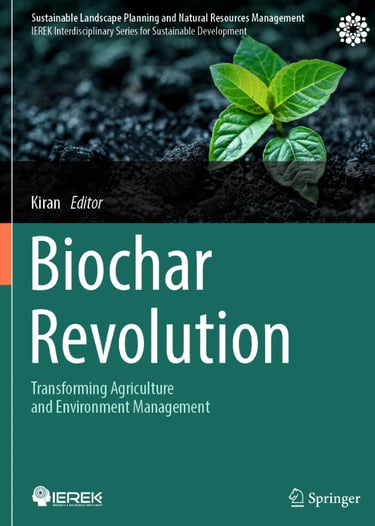

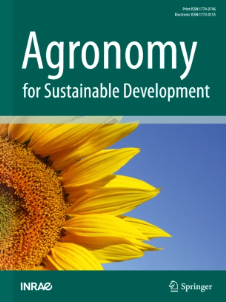



UK Centre for Ecology & Hydrology trials with Black Bull Biochar in Scottish grasslands achieved remarkable results with low-dose applications. Applying just 500 kg/ha (0.5 tons/acre) mixed with slurry, they measured 16% increase in annual grass yield with 40% greater production in the third cutting. Year two showed 18% increases in grassland and 30% in arable plots. Soil analysis revealed 51% more carbon and 22% more nitrogen, with benefits sustained across two years. Biochar Field Trials - Case Study
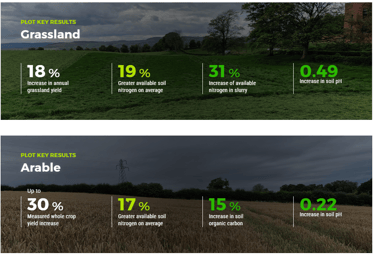

The global biochar market reflects growing commercial acceptance. Market size reached $541 million to $2.6 billion in 2023 depending on methodology, projected to grow to $1.35-5.1 billion by 2030-2032 at compound annual growth rates of 13-24%. Production volumes grew 91% annually from 2021-2023, indicating accelerating rather than steady adoption. Agriculture represents 59-79% of the market, with industrial applications growing fastest at 26% CAGR as companies discover uses beyond soil amendment.
North America leads globally with 58.5% market share, driven by organic agriculture demand, vast forest and agricultural residue availability (California alone generates 9 million tons agricultural waste and 14 million tons forest waste annually), and government support including $40 million in USDA funding in 2022. Agricultural residues—your feedstock category—show 26% CAGR growth through 2030, the fastest-growing feedstock segment, as farmers and processors seek to valorize waste streams while addressing environmental regulations on burning and disposal.
Reference : Link
